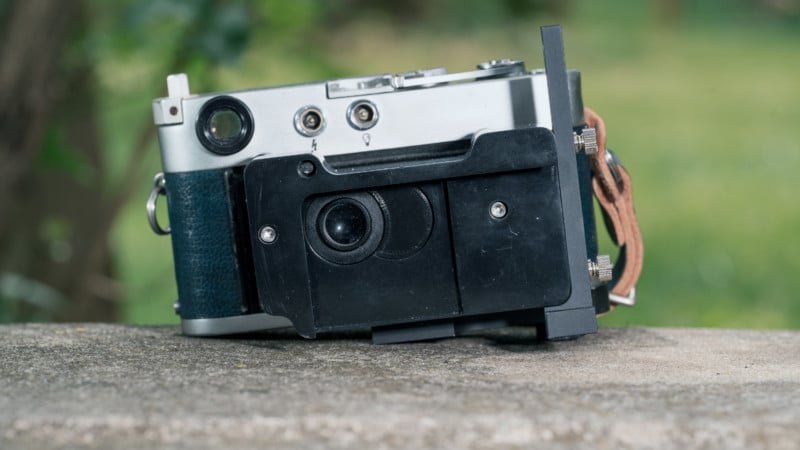DiGi Swap Falls Short of Its Lofty Ambitions, Review Concludes
![]()
The DiGi Swap is a combination smartphone holster and app that connects to a film camera and is designed to allow photographers to shoot with classic film bodies as if they were digital. Unfortunately, it doesn’t appear to live up to expectations.
Originally teased in January and revealed as a Kickstarter in April (and has been successfully backed), the idea of the DiGi Swap is simple. Fireworks, the company behind the device, made the DiGi Swap to enable a modern film camera experience with classic bodies in a way that did not require the purchase of new film but also wouldn’t require a modification to the camera and would allow for photos to be reviewed immediately.
The solution Fireworks came up with is a rather large holster system that mounts a modern smartphone directly behind a film camera and allows photographers to shoot through the camera using a dedicated companion app.
“The application interlocks with the shutter, detects the light coming in and out of the film camera, and records it on the iPhone,” the company told PetaPixel in January. “A macro lens and a projection screen are placed on the camera and the image projected on the phone is captured. It is a patented technology.”
![]()
The goal is solid, but in a review on PCMag, author Jim Fisher says that the dream idea of melding the modern conveniences of a smartphone and the classic feel of a film camera isn’t quite met in the DiGi Swap.
“Once you install the DiGi Swap, there’s a big, metal bracket hanging off the back of your camera. It turns the Leica M3 — a camera that I think is just about as good as it gets in terms of design — into an inelegant clunker,” he writes. “The DiGi Swap makes the M3 look like something that came out of Dr. Frankenstein’s laboratory, not the Bauhaus.”
![]()
The experience of taking a photo using the setup isn’t great either.
“Once you install your phone, you notice quickly that the mounting bracket blocks its left-side power button. Getting my phone to wake and unlock it with Face ID was a pain — most of the time I ended up having to punch in my passcode to get into the app. It’s a worse setup than either a film camera or an iPhone if you want to capture candid moments.”

It is likely that Fisher could forgive the obtrusive physical design and clunky operation if it meant he was able to capture great photos, but the DiGi Swap lets him down in that category as well. The photos have a sort of “foggy” look to them and Fisher says the result is that it makes classic Leica glass, often heralded for its quality, look akin to that of a Holga lens.
![]()
![]()
![]()
![]()
![]()
![]()
In the end, Fisher says that while he enjoys new technology and likes the idea of what the DiGi Swap wanted to accomplish, the actual in-hand experience is cumbersome and unenjoyable and the results don’t merit the hassle.
“The dream of bringing digital sensors to classic film cameras remains just that… a dream,” he writes.
Fisher’s full review of the DiGi Swap can be read on PCMag.
Image credits: Photos provided courtesy of Jim Fisher, PCMag.